Search Images
Browse Content (p. 120)
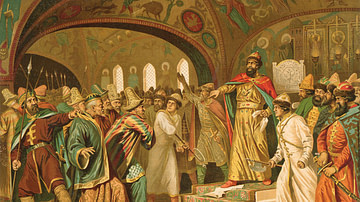
Image
Ivan the Great Tearing the Khan's Letter to Pieces
Ivan the Great Tearing the Khan's Letter to Pieces, oil on canvas by Aleksey Kivshenko (1851-1896).
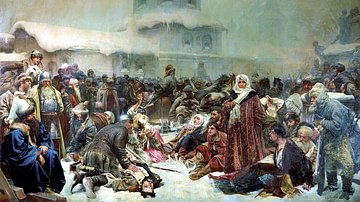
Image
Destruction of the Novgorod Veche
Destruction of the Novgorod Veche, oil on canvas by Klavdy Lebedev, 1889.
State Tretyakov Gallery, Moscow.
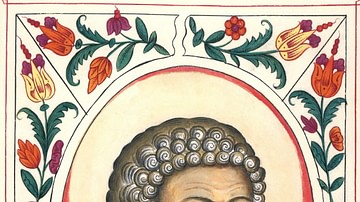
Image
Ivan III of Russia Portrait
Ivan III, Grand Duke of Moscow (r. 1462-1505), picture from The Tsar's Titular, 1672.
Scanned from Russian book RUSSIA: Complete Encyclopedic Illustrated Reference Book, OLMA-PRESS, 2002.
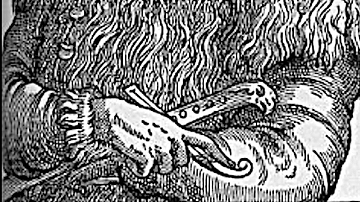
Image
Ivan III of Russia
Ivan III of Russia (Ivan the Great, r. 1462-1505), engraving published in H.F. Helmolt (ed.): History of the World. New York: Dodd, Mead and Company, 1902.
University of Texas Portrait Gallery.
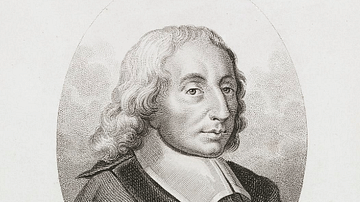
Image
Portrait of Blaise Pascal
An engraved portrait of the French mathematician, scientist, and philosopher Blaise Pascal (1623-1662). Engraved by Ambroise Tardieu (1788-1841). (Science Museum, London)
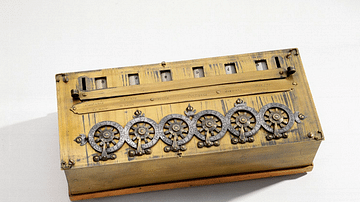
Image
Pascal's Calculator
A replica of the calculating machine made in 1642 by the French mathematician, scientist, and philosopher Blaise Pascal (1623-1662). Made of brass and 28 cm in length. (Science Museum, London)
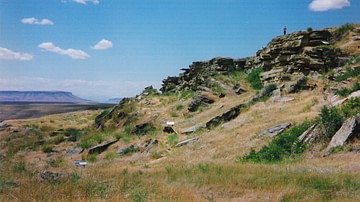
Image
Buffalo Jump, near Ulm, Montana
The buffalo jump near Ulm, Montana. Formerly called Ulm Pishkun, now called First People's Buffalo Jump. The buffalo jump was used regularly by Plains Indians in hunting North American bison by chasing them toward a cliff they would plunge...

Image
The Crow Indian Buffalo Hunt Diorama
The Crow Indian Bison Hunt diorama.
The North American Indians: A Tribute to Survival exhibit, Milwaukee Public Museum in Milwaukee, Wisconsin, USA.
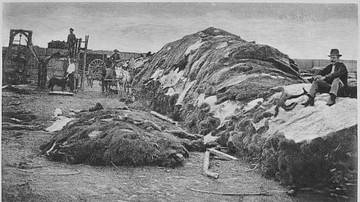
Image
Rath & Wright's Buffalo Hide Yard in Dodge City
Rath & Wright's Buffalo Hide Yard in Dodge City, Kansas, showing 40,000 buffalo hides. According to eyewitness accounts, such as those of Old Lady Horse of the Kiowa Nation, this became a common sight in the latter part of the 19th century...

Image
Map of the Extermination of the Bison
A map showing the extermination of the American bison to 1889, based on a drawing by conservationist and zoologist William Temple Hornaday. Light brown indicates the original range; brown suggests the range as of 1870; small black areas are...